50 Things About Artificial Turf
Equipment melts the plastic together and extrudes it through a perforated steel plate. The strands exit the steel plate into a water trough, solidifying the synthetic grass mixture. A machine pulls the strands through a large pulley and keeps them separated while they move on to the next station. Rollers stretch the strands until they become as thin as natural grass. Spools hold the synthetic grass strands. Once a spool has been filled, different color strands are woven together to form multiple synthetic yarns. Traveling through guides while wound around a giant spool prevents the yarn from slackening.
Mesh fabric merges with synthetic sheeting while the synthetic yarn travels through tubing to a tufting machine. A tufting machine is like a giant sewing machine, containing over 200 needles to hook the yarn through the sheeting.
While the turf is being tufted, small knives underneath cut the ends to make the yarn appear like grass blades. The backing is moved to a coating roller which picks up adhesive to apply to the turf’s backing.
The adhesive is dried in both open air and an enclosed setting. As the turf exits the drying, hot pins burn holes into the turf for drainage.
After multiple inspection points, including measuring the turf fiber length and minor trimming, the turf is moved to a device simulating football cleats to affirm the turf’s durability.
This comprehensive video featured on the Discovery Channel’s hit show “How it’s Made” takes you through each step of the synthetic grass process.
Through years of research and development, synthetic grass has been modified and transformed into what we now know as “third-generation” synthetic grass, according to the Synthetic Turf Council.
Through this constant evolution, synthetic grass has become the high-quality material we know today for most landscape installations.
The actual green blade of synthetic grass comprises a polyethylene material, a common form of plastic found in items such as bottles and plastic bags. The polyethylene comes in a solid pellet and is heated down along with any color tones and UV-resistant additives.
The thatch layer of synthetic grass is made from polypropylene, polyethylene or nylon. The thatch layer provides the turf with an added support layer and blade recovery.
Synthetic grass blades are inserted into the backing in rows through a tufting machine, which is basically a giant sewing machine with hundreds of needles. This machine gives the grass blades and thatch a more secure hold, increasing the turf’s life and durability.
What began as a part of a solution to help improve inner city youth’s physical fitness in the 1950s sprouted into an entire industry dedicated to synthetic grass production.
The Ford Foundation’s Education Facilities Laboratory, in conjunction with Monsanto Industries and Chemstrand, encouraged the use of synthetic fiber carpeting in schools. From 1962 through 1966, The Creative Group, Chemstrand’s research organization, tested the synthetic turf carpet surfaces for water drainage, resistance, and durability regarding foot traction.
The first large synthetic grass installation occurred in 1964 at Moses Brown School in Providence, Rhode Island. The grass was referred to as “Chemgrass.”
In 1965 Houston’s Astrodome was in dire need of a consistent playing field as environmental conditions did not permit a decent atmosphere for natural grass growth. Instead of the field often coated with green paint among the dirt and patches of grass, Astrodome developer Judge Hofheinz consulted Monsanto about installing Chemgrass.
The Major League Baseball Team, the Houston Astros, began their season in 1966 throwing pitches and knocking out home runs on top of Chemgrass, formally re-named “Astroturf,” the household name known to much of America today. Invented by James M. Faria and Robert T. Wright of the Chemstrand Company, Astroturf’s first-generation synthetic grass showcased tightly curled nylon fibers woven into a foam backing.
A Trademark patent was officially issued for artificial turf on July 25, 1967.
Following Astrodome’s success, Indiana State University installed artificial turf for the first outdoor stadium in 1967.
Artificial turf became a surface success that continued to climb slowly but surely through the 1970s with sports arenas throughout the United States and Canada. Cincinnati’s Riverfront Stadium, Philadelphia’s Veterans Stadium, and Pittsburgh’s Three Rivers Stadium followed the artificial turf trend.
As the 1970s came into full swing, the artificial turf industry followed the shag carpet trend and introduced “shag turf.” The longer yarns were created from a softer polypropylene material, much more user-friendly than its first-generation predecessor. Sports like field hockey benefited from this surface. However, soccer was left in the dust due to the soccer ball’s reaction to the grass’s surface.
Fast forward to the middle of the 1990s to third-generation artificial turf, which featured a much softer polyethylene blade fiber. You will find this turf on any residential, commercial or sports landscape today. The third-generation synthetic grass also features longer fibers spaced farther apart and a “thatch,” or dead grass yarn, positioned between the grass blades and the backing. For ideal turf form, function and stability, infill is spread throughout for extra comfort while providing adequate foot traction.
Artificial turf captured America’s attention after Astroturf installed the first generation of synthetic grass for the Houston Astrodome’s baseball field in 1966. This installation set a precedent for many sports fields across America that could not otherwise maintain natural grass.
Through peaks and valleys of media scrutiny along many product modifications, second and third-generation artificial grass became a staple for FIFA at the 2010 World Cup Games in South Africa. In addition to taking root on the lawns of American homeowners, synthetic grass has since replaced Hollywood’s infamous red carpet several times, including the Teen Choice Awards, the Latin Grammy’s, and other large Hollywood parties to encourage the “go green” lifestyle.
By definition, a turf’s denier measures the density of the turf fibers. According to Merriam Webster’s Merriam-Webster’s definition, a denier is a unit of fineness for yarn equal to the fineness of a yarn weighing one gram for every 9000 meters.
Drainage systems are primarily designed to allow water to percolate through the backing of the turf and drain through the base layer into the water table. Most synthetic grass backing is perforated with holes that measure approximately ½ centimeter in diameter and can drain at a rate of more than 400 inches per hour per square yard.
With the exception of most synthetic putting greens, nearly all landscape turf is perforated and allows for easy drainage. A good drainage system can not only help with clean up, but it will also help prevent spores and bacteria from building up within the synthetic grass.
Oval Fiber
Turfs that have oval-shaped fibers are commonly found in many different landscape installations. These fibers feel soft to the touch while still maintaining durability.
Diamond De-Lustered Fiber
Synthetic turf that features a diamond de-lustered shape maintains a soft but sturdier feel. It works ideally as a landscape grass for commercial and residential areas.
3D Curvy “W” Fiber
The 3D Curvy ‘W’ fiber is a strong fiber that can withstand large amounts of pressure and helps the turf, as a whole, bounce back to its original state. The blade offers multiple support points, which allows for greater durability and a “memory” effect. The turf will bounce back to its original state, despite the surface weight.
Omega Fiber
The omega blade shape can be found most often in pet turfs as well as shorter pile heights.
“C” Shaped Fiber
The C-shaped blade gives the turf a natural look and helps the synthetic grass feel soft to the touch. This blade shape can be applied on any installation; however, it is most commonly found on residential and commercial property landscapes.
“M” Shaped Fiber
The “M” shaped blade creates more durability making the turf ideal for heavy foot traffic. Used primarily for areas that experience high amounts of foot traffic, the “M” blade is excellent for landscapes with high foot traffic.
S Blade
The “S” Blade is built utilizing an S’s curves to reflect less sunlight – giving it a more natural and realistic appearance. The extra volume in shape and increased durability in the surface area give the blade moderate traffic resilience.
Corrugated
The Corrugated blade fiber has a unique shape that allows for enhanced recovery and stability. The intricate shape also reduces shine and creates a more visual texture and depth in each blade, making this shape ideal for residential and commercial projects with moderate traffic.
U Shape
The curvature on the “U” shaped blades is designed to create a visual feeling of added depth to your turf, especially when viewed from above. The broader blades result in the natural look of a strong and healthy landscape, bringing to life any project with moderate foot traffic.
Diamond De-Lustered & Mini Ultra
The Diamond De-Lustered & Mini Ultra shape combination ensures a turf that is ideal for commercial and residential landscape installations as it maintains a soft yet sturdy feel.
3D Curvy W & Curvy Ribbed C
The 3D Curvy W & Curvy Ribbed C shape combination allows for strong fibers that can stand up to foot traffic while still maintaining a natural appearance and softness to the touch. These blade shapes will help the turf return to its original form with multiple support points and make it ideal for residential and commercial landscape installations.
When the nail rusts, it will swell, which helps secure the turf to the base layer. Non-galvanized nails are ideal for synthetic grass installations.
It is within the synthetic grass construction process that an adhesive glue is coated to the back of the synthetic turf. The coating must be done with the right elements for the synthetic grass to have a secure and strong backing.
A coated backing is most commonly comprised of either a urethane material or a latex material.
Throughout recent years, synthetic grass has been utilized as an alternative to natural grass. Not only does synthetic grass stay green all year long, but it also aids in multiple aspects of environmental conservation.
1. Water Conservation:
Within the past few years, many areas across the nation and world have suffered from extreme drought, and water rationing is becoming commonplace. According to the Southern Nevada Water Authority, one square foot of synthetic grass can save up to 55 gallons of water in one year.
2. Pesticides:
It may rid your plants and grass of annoying bugs, weeds and other overgrowths; however, pesticide chemicals have proven harmful side effects that not only hide in your lawn but eventually seep into your local water table. According to the Cancer Research Center-UK, studies suggest pesticides could be linked to cancers such as leukemia, brain tumors, and breast and prostate cancer.
3. Carbon Emissions:
According to the Environmental Protection Agency, gas-powered gardening equipment like lawnmowers represents five percent of air pollution in the U.S. A synthetic lawn requires minimal upkeep with gas-powered gardening equipment and would eliminate the need for these items.
A synthetic lawn not only benefits the end user but also has multiple environmental advantages. By eliminating water and chemical waste and reducing carbon emissions, artificial turf can solve many ongoing environmental problems.
- Playground fields
- Sports fields
Both of these will require seaming tape and glue instead of nails due to the potentially high activity on these surfaces. However, staples and nails are still needed to fasten the outside edges of these surfaces.
For more information about installing turf using nails and staples, please watch this video:
Synthetic grass installation can be basic; however, no two synthetic grass installs are done exactly the same way. There will always be unique situations for each install; however, there are basic differences for specific synthetic grass needs. A typical synthetic grass installation can last anywhere between one to three days.
For a basic synthetic grass installation, consider these steps:
1. Pre-Installation:
Remove existing materials and rough grade the area to create a solid sub-base. Rough grade the area to uncover everything underneath, including electric wiring, irrigation and pipes. Cap sprinklers at the pipe level to avoid any kind of leakage. Install bender board to provide a clean separation for plants and turf.
2. Base Preparation:
Install ½” or less crushed base to allow for proper drainage. Install this layer three inches deep. Distribute the base and ensure it is level to account for any sloping areas. Install drainage area. A smooth base will account for the surface-level appearance of the project.
3. Compacting Base:
Compact base by vibrating, tamping and rolling the gravel. This ensures the base is solid so nails can be driven into the turf.
4. Weed Retardant Layer (optional):
The weed cloth layer prevents growth from the base through the turf. This layer is not recommended if the installation involves pet usage. Overlap weed cloth edges by six inches and secure with as many flathead nails as possible to prevent the cloth’s movement. Trim the cloth to fit the area and leave a quarter-inch gap along the hardscape or border areas to allow for easier tucking.
5. Laying Turf:
Find a straight edge of the turf or a perpendicular edge for alignment. Square to fit the area and minimize cutting and fitting on all four sides. Secure the turf edges with nails to hold them in place. *Remember to soldier the turf towards your privileged viewpoint; in other words, consider the natural blade direction of the grass
6. Custom Fitting Turf:
Overcut the turf by one inch along the edges to provide excess turf necessary for tucking. If there are doubts, cut the turf fatter than estimated, as it can be trimmed later. Use a seaming tool to seam edges together. Cut the seams in an S-shape to avoid the turf pushing up. Install nails every six inches along the edges and drive them ¾ of the way down. Remember to move the surrounding fibers with another nail or staple, then tap the nail head all the way to the backing. Use U-shaped nails for the seams to join the turf edges together.
7. Tucking Turf (optional):
Hide the edges of your turf against the hardscape by using a metal bar known as a “wonder bar.”
8. Apply Infill:
Use a power brush to force grass blades up for infill to be applied. Apply your specified infill layer. The infill layer acts as a balance to hold the blades upright and gives the turf more weight.
9. Final Groom:
Power brush the turf once again to lightly force infill granules into the base of the turf. Remove any excess debris.
Set the cups at the grade level if you use a Poly Putt, Nylon putting green or a True Putt product. Cut and shape the green and attach your fringe. An optional final step is to use a soil vibratory plate compactor to distribute the sand infill into the putting green materials.
Now that you’ve forgone the lawn mower and have opted for artificial turf, maintaining your lawn, putting green or commercial property can be efficient and easy. We’ve broken it down for you into several easy ways you might consider when cleaning your beautiful evergreen lawn.
Here are a few guidelines for cleaning your synthetic grass landscape:
- Although debris can often make your lawn appear much more natural, according to the Association of Synthetic Grass Installers, you will eventually need to rake the lawn as you would a regular grass lawn to clear away any debris. A carpet rake or a leaf blower are great tools for this clean-up. Depending on your location, a simple weekly cleaning should do the trick!
- Certain areas of your landscape might not stand as tall due to extra foot traffic. Simply use a broom or a brush and brush against the natural grain to help each blade stand up.
“If you have a synthetic grass lawn that your furry friends frequently use, some special attention is required once they “do their business.” Here are a few turf-cleaning tips that will make you and your pet happy and make your turf last longer and smell fresh:
1. If your pet’s waste is solid:
After the waste dries, remove it as regular grass, then rinse. If the waste is loose, remove and spot-treat it with the appropriate disinfecting cleaner, such as a cleaner like TurFresh.
2. If your pet’s waste is liquid:
Although liquid waste will be more challenging to locate on your turf, it is best to assume your animal uses the entire area. Pet urine contains ammonia, which can result in smelly turf. Our TurFresh product neutralizes odors caused by the bacteria from the ammonia in pet urine, making this a great option for maintaining your furry friend’s play area.
What to avoid when cleaning up after your pet:
- Harsh acids
- Cleaners containing alcohol
- Pressurized water
By avoiding these items, you can preserve your turf so it will last longer!
1. Rooftop Gardens:
The world doesn’t have to be gray, brown or black on top of your roof! Greater metropolitan cities like New York, Los Angeles and Chicago have adopted the “rooftop garden” to incorporate eco-friendly designs into the otherwise monotone skyscapes.
2. Household items:
From puppy pads to pillows, synthetic grass can be found on all types of home items. Companies adopt the green look for their sandals, porch rugs and other indoor/outdoor furniture.
3. Walls:
Synthetic grass is not just for your landscape! The wide world of Pinterest showcases areas such as outdoor wall scapes, patios, even and bedroom headboards that are synthetic grass.
Listed here are the top three infill types used for synthetic grass and putting green installations:
1. Envirofill
Envirofill is an acrylic-coated sand most widely used by installers across the nation for its non-abrasive and anti-microbial properties. Not only does Envirofill inhibit the growth of bacteria within the turf, but the green color blends in with the blades because of the outer coating, and it also will not harm the turf. Once the sand granule is coated with green acrylic, Envirofill’s outer layer eliminates the granule’s angular outer edges, which can be abrasive for synthetic grass.
Envirofill typically comes in both large and small granule sizes. The large granule is primarily used for a typical synthetic grass landscape installation as opposed to the small granule, which is utilized in putting green installations.
2. Sand
The sand infill is most commonly comprised of a quartz base and comes in large and small granule sizes. The large granules are used primarily for any standard synthetic turf landscape installation, whereas the smaller granule-sized sand is used as infill for most synthetic putting green installations.
For the past few years, synthetic turf has been accepted as an alternative landscape by communities across the United States. Much of the nation remains in a stagnate drought which has a stranglehold specifically on the United States’ southwestern region.
According to the University of California Irvine’s Center for Hydrologic Modeling, the average lawn needs about 34,000 gallons, or 670 bathtubs full of water, to be maintained.
As a result, states such as California, Nevada, Arizona and Texas offer rebates through their local water district and communities to help stave drought conditions.
If your city offers synthetic turf or turf removal rebates, check with your local city and water district for rebates.
For example, some programs offer turf removal, which is an excellent start for water-saving landscapes.
Be sure to submit your applications and stay current with your local water district rebates!
1. Low maintenance
Once it’s installed, artificial turf requires minimal maintenance or watering.
2. No need for a lawnmower
Lawnmowers become costly, need repair and makeup five percent of the country’s air pollution.
3. No fertilizers or weed killers
Synthetic turf will only require certain types of infill to help the blades stand tall. SGW infill products are safe and non-toxic to people and the environment.
4. Environmentally friendly
Not only does synthetic grass help air quality by eliminating gardening equipment, but it also saves a ton of water, in both quality and quantity. According to the Sacramento Bee, a typical natural turf lawn requires 55 gallons of water per square foot per year, which equals 44,000 gallons for an 800-square-foot lawn. Artificial grass saves up to 660,000 gallons of water over 15 years!
5. Forget about pulling weeds!
Most synthetic turf companies offer specific weed fabric designed to block weeds from creeping through your synthetic grass.
6. Long lasting
Synthetic grass can last up to 15 years before needing to replace it. Most synthetic turf products are built with the latest synthetic turf technology and are designed to withstand high amounts of foot traffic and all weather conditions.
7. Superior Drainage
Unlike natural grass, synthetic grass drains at a higher right and will not accrue mud or potholes. It will also dry faster and provide more outdoor time for fun activities or sports team practice.
8. Strong and durable
Most artificial turf blades are tufted into the polyurethane backing, each designed to handle large amounts of foot traffic. Feel free to play all kinds of activities on your synthetic grass.
9. Looks beautiful
Synthetic grass always appears perfectly groomed and remains green year-round.
10. Saves Time
Instead of spending the weekends manicuring the lawn, you can spend more time relaxing in your yard!
Many synthetic grass companies carry a variety of synthetic grasses that can fit any playground surface. Underneath the turf surface, you will find lawn padding that cushions any fall. Typically, turf companies offer two types of lawn padding for those spills and thrills:
- Medium-density foam: 5-foot fall rating
- High-density foam: 8-foot fall rating
Most artificial turf is made from polyethylene and will not absorb stains, although wiping or rinsing spills with water is recommended.
If the environment experiences snowy conditions, the excess water will percolate once the snow melts, and the turf may require a rake or power broom touch-up.
For areas prone to mudslides or storm surges, try to take as much debris off the turf as possible until the grass blades are visible. A power washer and infill may have to be re-applied for mudslide debris.
Requirements vary throughout the nation’s states; however, in California, a D-12 license is considered a state contractor’s license and a C-27 is a landscaper’s license. Meeting certain requirements set by your state government will only make you or your customer feel more secure in your synthetic grass landscape installations. Without a licensed contractor, you become personally responsible for what happens on your property.

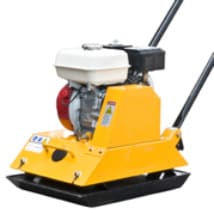 Plate Compactor: A machine used to compact the surface of decomposed granite or base rock.
Plate Compactor: A machine used to compact the surface of decomposed granite or base rock.
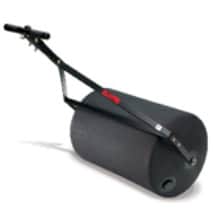 Water Roller: This tool smooths a putting green or increases the ball’s speed. It is a lawn roller filled with water.
Water Roller: This tool smooths a putting green or increases the ball’s speed. It is a lawn roller filled with water.
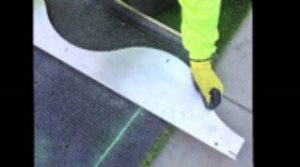 Super Seamer Tool™: This S-shaped tool creates a smooth surface that makes turf easy to seam pieces together. It alleviates the common synthetic turf “Mohawk effect” in four easy steps.
Super Seamer Tool™: This S-shaped tool creates a smooth surface that makes turf easy to seam pieces together. It alleviates the common synthetic turf “Mohawk effect” in four easy steps.
Although installing a natural lawn is less than half a synthetic lawn’s initial cost, a customer can potentially realize their return on investment in about 2.5 years.
For a typical 1,200-square-foot natural grass lawn, the installation will cost about $2.50 per square foot, which totals $3,000. With an irrigation system, the cost can add up to $4,500.
A standard 1,200-square-foot synthetic grass lawn can cost about $8.00 per square foot and requires an initial investment of about $10,800.
After natural grass lawn maintenance, including irrigation, fertilization, chemicals, and repairs, the total annual cost adds up to approximately $2,268.
A synthetic lawn requires little water and an annual power brush cleaning to fluff the blades, costing about $175.
The choices to save money, time, and water are yours! Consider these calculations and invest in a lawn that works for you.
Like many things in general, artificial turf has and continues to experience evolutionary growth to accommodate customers’ needs in an ever-expanding market. Since the early 1960s, synthetic turf has appeared on sports fields and has moved to home lawns. There are three total generations of artificial turf:
First Generation: Created in the 1960s from polypropylene, first-generation synthetic turf was cheaper and softer than nylon and was featured as tightly curled fibers.
Second Generation: In the 1970s, second-generation turf was introduced with longer fibers that imitated the natural grass look. The sand infill was also included in the installation to help the blades stand up.
Third Generation: What we know as present-day synthetic turf, the third generation features longer fibers spaced further apart and are made with much softer polyethylene. Polypropylene, polyethylene and nylon thatch were incorporated to add a realistic “dead grass” appearance and extra cushioning. Modifications for infill products have allowed synthetic turf to last longer and stay cleaner throughout the years.
As with most things, synthetic turf products continue to grow with the industry’s supply and demand. Products and formulas evolve to bring top-quality products to the surface.
High-quality synthetic turf must have top-notch backing to keep the fibers intact. The industry offers many different types of synthetic turf backing for specific purposes. There are two layers of backing involved with synthetic grass:
1. Primary backing: The material where the turf is looped through. The most common types of backing are referred to as:
- K29 (most common)
- 13 Pic
- 15 Pic
- D12
2. The coating: This locks in the tuft bind after the fiber is tufted through. After the tufting process, it is cooked into the backing at high temperatures.
*Hot melt coating is the exception, which is done by an adhesive*
The most common forms of coating are:
- Polyurethane
- Latex
- Hot Melt
The most common form of coating in the United States is polyurethane, whereas Europe will often use a latex backing.
Before you proceed with your installation, make sure the chosen colors blend with your surrounding natural foliage.
2. Does your synthetic turf provide drainage?
With the exception of some putting greens, synthetic grass should have a perforated backing that will give efficient drainage for your landscape. Good drainage is imperative for your landscape installation.
3. Industry standards: Turf quality, Contractor’s license, warranty:
When you invest in high-quality products, your synthetic grass landscape will last longer and require less maintenance. Always seek an installer with a contractor’s license to avoid certain legal issues that may arise. Always find out if your synthetic grass products come with a warranty!
Installing synthetic turf between pavers and other hardscapes can create a beautiful visual symmetry for your landscape. Synthetic turf and pavers can brighten up an otherwise standard hardscape and create a stunning design for your lawn or commercial property. Here are a few things to consider when “turfing” around pavers and hardscape:
1. The turf must go the same grain direction: Similar to installing wood, synthetic grass follows a grain direction, so the look remains consistent.
2. Use a “Pro” turf: A thicker face weight will allow extra wear and tear on your hardscape. For example, when you install synthetic grass between concrete pavers on a driveway, a pro turf will allow more foot and car traffic and faster recovery time.
3. Remember: Which every hardscape you decide to set the turf between, the hardscape must be down 1/4” to 1/2”.
4. Order more turf than the actual installed square footage.
The grass is not always greener…it can be pink, blue, black, tan or brown! A turf’s color tone is often incorporated with polyethylene base pellets in pellet form. The two are melted together and then extruded into faux grass.
Many sports teams have utilized color synthetic grass in the past for logos and fields; however, people are becoming more creative with incorporating color turf into certain landscapes, playgrounds or poolside ground cover. Whatever the creative fancy, color turf can add a vibrant touch to any application or product. For more information about color turf, please click here.
Whether you are entering the synthetic grass installation business or are already a solidified industry player, a distributor should actively provide you with the following materials, services, tools and conditions:
- Intro to the industry
- Industry knowledge
- Business Strategies
- Marketing Materials
- Product Quality
- Product Variety
- Installation Training
- Lead Generators
- Product Knowledge
- Warranties
- Customer Service
- Sales Rep
Yarn extrusion is defined as the process of transforming liquid plastic into individual solid fibers by pushing the liquid plastic through a fixed cross sectional profile that is designed to form each individual blade of turf. For example, a turf blade can be extruded with a ‘W’ shaped profile or a ‘U’ shaped profile. In the world of yarn extrusion, these companies are the main producers of the latest in synthetic turf technology:
TenCate Grass: As the world’s leading producer of high quality synthetic grass fibers, TenCate Grass develops and manufactures synthetic grass fibers, primary backing and infill materials for synthetic turf systems. With the latest in turf design, TenCate Grass features grass blades of all shapes and specs while incorporating “Cool Yarn” technology as well as U.V. inhibitors within their artificial grass materials. Their grass products are featured as a line called “TigerTurf” and is distributed across the continents. Synthetic Grass Warehouse is the exclusive North American distributor of this popular turf line.
Bonar: Based in Belgium and the United Kingdom, Bonar Yarns is one of the major players in synthetic grass yarn extrusion. They feature “Ultra technology” which focuses on durability, resilience and skin friendliness. “CoolGrass” technology is focused on the surface temperature of their products through light reflective technology.
Mattex: Based out of the Jeddah, Kingdom of Saudi Arabia. In the present day, Mattex has two facilities, one in Jeddah and one in Dubai as well as warehouse locations around the world. They focus primarily on carpet and synthetic grass backings.
- Place your order
- Order is printed and processed through our system and your sales rep.
- After your sales rep informs the warehouse crew, the warehouse pulls your turf from our racks with a carpet pole forklift.
- The turf is cut from the plastic wrapping and inspected for potential defects or damages.
- The turf roll is measured according to your specifications
- The turf roll is cut with an AccuCut Q9 carpet machine, free of charge.
- The turf roll is re-wrapped in heavy-duty plastic.
- A shipping label or a pick-up label is placed on your roll.
The roll is shipped or placed in your truck, car, wagon, or airplane…but we don’t recommend skateboards, scooters or pogo sticks.
Other Topics:
Maintenance & Care
How to take care of your turf
Environmental Impact
Our pledge to taking care of our planet
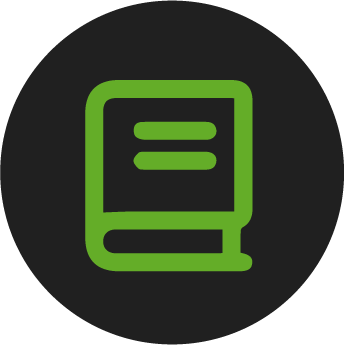
Terminology & FAQs
Learn terms & see frequently asked questions

Installing artificial grass
Our tried and true steps for installation

Product Information
Learn about our turf in depth

Technology
What goes into our Turf
Here to help
Our Commitment
We are committed to providing the best artificial turf products at competitive prices. Our warehouse carries the most advanced synthetic grass products available, engineered to look and feel like real grass. Every turf product is made with high quality materials that are safe for everyone, especially children and pets.

Industry Leaders
SGW has always stood out among competitors, offering new products with the latest technology.

Service Oriented
The only thing better than our grass is our customer service. Our staff is committed to providing the best experience possible for our clients.

Quality Driven
At SGW we only offer products that maintains a high standard of quality. Backed by up to a 15 year warranty, the best in the industry.
